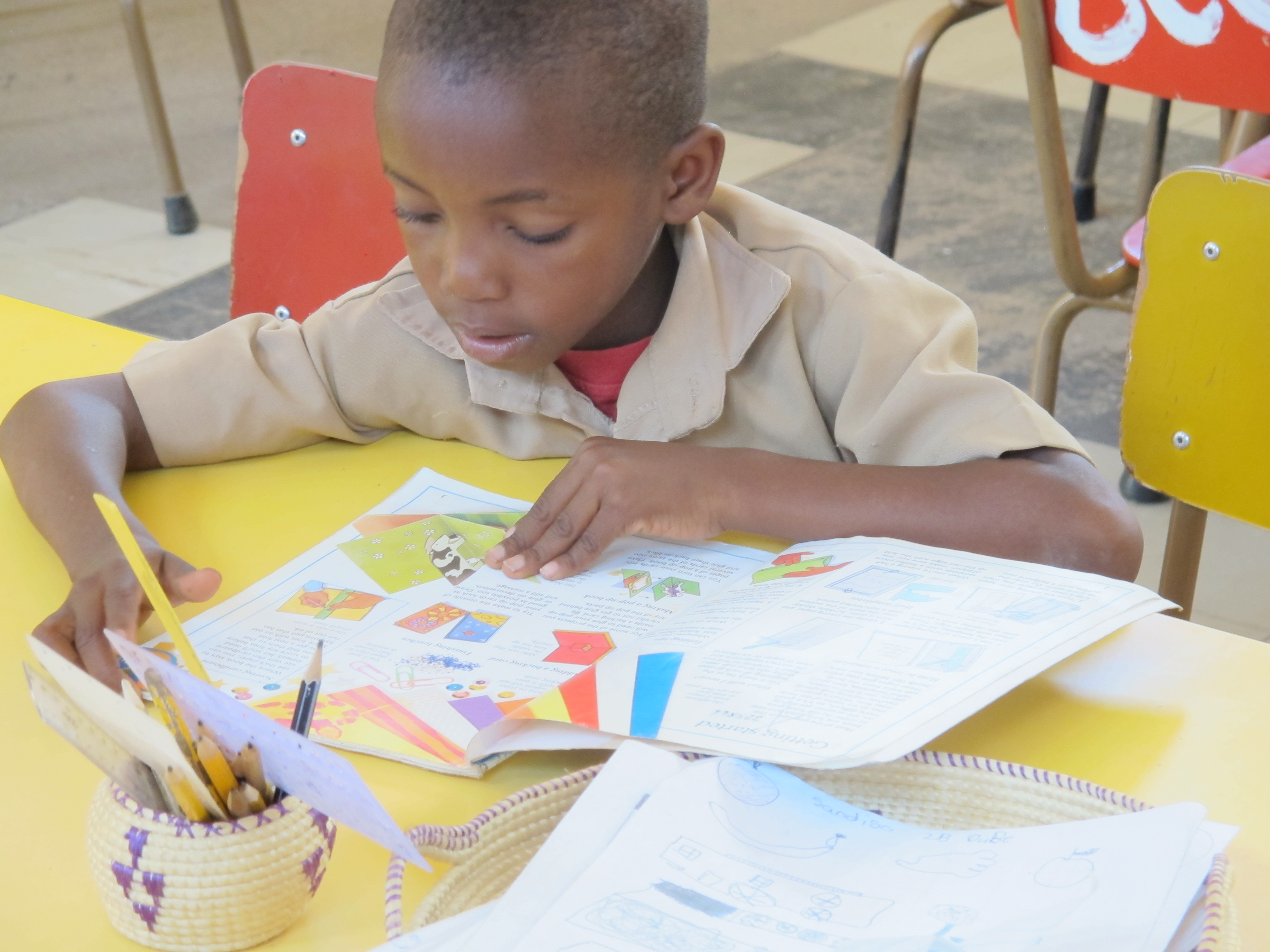Examining Discretionary Space in Our Classrooms: Read Alouds
We keep coming back to the question: How can we disrupt systems of injustice? As educators, we have unique access to disrupt systems of injustice in schools. There are systemic practices that we can disrupt at school and district levels, such as tracking and testing, and there are small, often overlooked, decisions that we individually make in our classrooms each day within our discretionary spaces. In fact, there is an incredible amount of discretionary space that we can use to disrupt, rather than perpetuate, patterns of injustice.
Discretionary spaces are the moments that are not dictated by policies or curriculum, but are places where we make countless decisions, such as how to facilitate a discussion or how to manage a small classroom event (Ball, 2020). Each of these decisions within discretionary spaces is an opportunity for us to disrupt injustice. And it’s a space where we can intentionally choose to grow each of our learners’ identity, agency, positionality, and authority (Berry & Thunder, 2012). How can we critically evaluate and reflect on the normalized practices in schools that fill these discretionary spaces and that institutionalize dominant values and habits?
Here is Kateri’s reflection:
I’ve been researching and reading to diversify the texts I use. I want my students to see themselves, their families, each other, and the vast possibilities for their lives reflected in the texts I choose to read aloud and share. I want the stories they internalize to carry positive messages about their diverse identities, their agency as learners and community members, their positionality as competent readers, writers, and mathematicians, and their authority as leaders and change agents in our community both in and out of school. And yes, I want all of those things for my four-year-old learners in PreK.
Last week, I attended TeachingWorks’ (Re)considering and Supporting Home-Based Learning Virtual Summer Institute, where they posed the following reflection questions:
What do you usually do at the beginning of the year and why?
- Make a list.
- Why do you do this?
- How/Where did you learn to do this?
- Is this important? Why?
- Will this be important to do this fall? Why? (Ball, 2020)
I used these questions to evaluate and reflect on one of the discretionary spaces in my classroom: read alouds.
What do I usually do at the beginning of the year?
I usually begin the year with a study of folklore. I read aloud variations of three folktales: Goldilocks and the Three Bears, the Three Little Pigs, and the Three Billy Goats Gruff.
Why do I do this?
Rereading is an important instructional strategy. It allows learners to gain a deeper understanding of story elements, broadens vocabulary, helps learners understand language and narrative structure, and grows their confidence and motivation as readers. Reading a text multiple times positions learners as active participants in a read aloud, where they ask and answer questions as well as make predictions, rather than passively listening (Dickinson, 2011). Reading variations of the same text allows us to engage in the cognitive routines of analyzing similarities and differences, whole-to-part complexities, relationships, and perspectives (Hammond, 2015). Reading variations can also increase confidence and engagement (Collins & Glover, 2015), lead to richer, more in-depth comprehension and discussion that moves from beyond questions to themes and concepts (Morrow, Frietag & Campbell, 2009), and increase vocabulary acquisition (Horst, Parson & Bryan, 2011).
My four-year-olds become avid retellers and rereaders of these texts that become familiar over time. I capitalize on their retellings to explicitly teach playful learning (Hirsh-Pasek et al., 2009; Lillard et al., 2012). We intentionally learn about the roles, materials, tools, actions, and dialogue involved in planning and implementing play as well as the processes of problem solving and collaboration. They assign character roles and create settings, share repeated lines with great inflection, use their bodies to act out their emotions, use new language to describe the story events, settings, and problems, take on the perspectives of the characters, and make decisions about how to solve the story problems in their own variations. I interact with them before, during, and after their playful learning to extend each of these important intentions for learning.
These texts become familiar, which makes them fantastic spring boards for contextualized problem solving about taking turns, sharing, talking out problems, having empathy, counting and comparing, seriation, measurement, describing and classifying attributes, and sequencing. Familiar texts enable me to storify our problem solving and enable my learners to access the content and show what they know (Hammond, 2015).
We become a community of readers, story tellers, writers, problem-solvers, learners, and friends by sharing these texts.
How/Where did you learn to do this?
This is where I pause.
I don’t know.
I’ve seen other educators I admire use these folktales. I’ve seen these folktales in curricula. I’m familiar with these folktales from my childhood.
All of my explanations for ‘why’ arise from my research in literacy, math, early childhood education and culturally responsive teaching. But my reasons for using these three specific folktales and the others that fill our school year (Jack and the Beanstalk, the Gingerbread Man, Little Red Riding Hood, etc.) are all without a research-based reason.
I do this because I do this. And that is a problem. This is a discretionary space where I am complicit in perpetuating the curriculum of white supremacy.
Is This Important?
Yes, research says that choosing to read aloud and reread variations of texts is important.
And yes, this choice, this selection of texts, this discretionary space is also important. This is a pivotal moment for me to choose to disrupt injustice.
“What should I do?” I asked my husband on our evening walk. And he gave such a simple answer, “There are folktales from cultures all around the world. Why don’t you read those?”
I began my research, and wow, was he right?! The folktales I had selected in previous years all originated in Europe. But every continent, country, culture has its own fairy tales, folk tales, and folklore. I have been reading and reading and reading, and now, I have begun a list of new folklore characters and their stories to fill our community: Anansi the Spider, Brer Rabbit, Aladdin, Momotaro, Iktomi, Nanabozho, and more. And this is just a start!
Will this be important to do this fall? Why?
In a few weeks, I will be building a community of learners in a way that I have not previously. We will all be in our homes meeting virtually. Making these shared texts familiar and common will be even more important for building cognitive routines and storify-ing our problem solving.
And because we are learning virtually, I get to expand our classroom community in new ways too, into each home filled with family members – parents, grandparents, siblings, and cousins.
Rather than relying on my research alone, I want to engage my students’ first teachers: their families. I want to ask them the folklore they tell and retell, the folklore they remember from their childhood, the folk characters they weave into their lives, and the folklore lessons they teach their children. I plan to ask families to share their folklore texts, to record themselves telling these stories, to tell, draw and write variations of these stories with their children, and to join our synchronous class meetings to share these stories.
I will ask them to teach me and our community from their funds of knowledge (Gonzalez et al., 2005).
This was such a simple change. Perhaps obvious and small to you. But it had become a habit of mine – to read the same folktales each year, and therefore, to contribute to the institutionalization of this white, European-centric folklore over others. To disrupt this pattern, to make this simple change, I have to be intentional. And to be intentional, I have to ask critical questions of my discretionary space and then choose to change. I have to choose to engage in the struggle to use teaching as a force for justice (Ball, 2020).
What discretionary space will you examine?
References
Ball, D.L. (2020, July). “Get Up, Stand Up: Fighting Systemic Injustice Through Teaching” – TeachingWorks 2020 Virtual Summer Institute Keynote Address. Viewable at:
Berry, III, R.Q. & Thunder, K. (2012). The promise of qualitative metasynthesis: Mathematics experiences of Black learners. Journal of Mathematics Education at Teachers College, 3, 43-55.
Gonzalez, N., Moll, L.C., & Amanti, C. (2005). Funds of knowledge: Theorizing practices in households, communities, and classrooms. Lawrence Erlbaum Associates, Inc.
Hammond, Z. (2015). Culturally responsive teaching and the brain: Promoting authentic engagement and rigor among culturally and linguistically diverse students. Corwin.
Hirsh-Pasek, K., Golinkoff, R., Berk, L., & Singer, D. (2009). A mandate for playful learning in preschool: Presenting the evidence. Oxford University Press.
Lillard, A.S. (2012). Preschool children’s development in classic montessori, supplemented montessori, and conventional programs. Journal of School Psychology, 50, 279-401.

